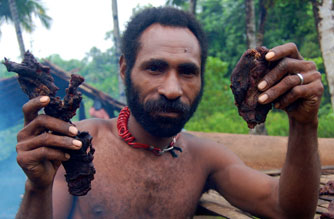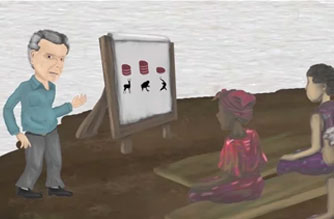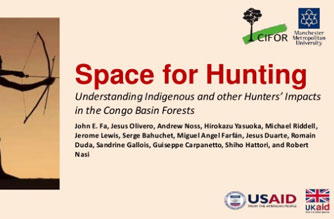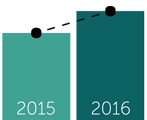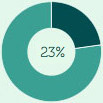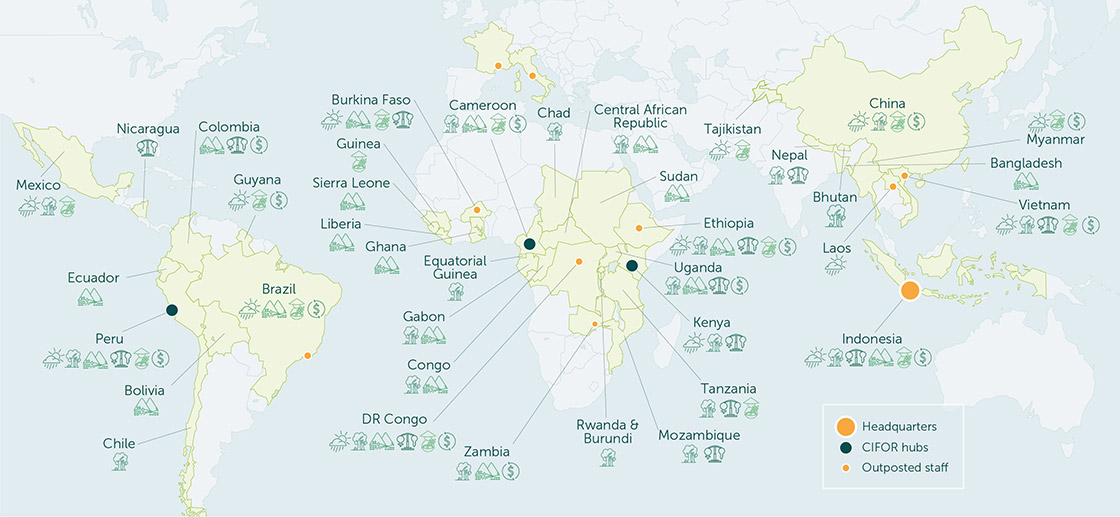
First milestones toward safeguarding Pygmies’ rights
Timely studies shed light on a vulnerable indigenous group
The Efe use bows and arrows, while the Mbuti prefer nets and the Baka hunt in groups with spears. They are among the various ethnic groups called Pygmies, most of whom live in forests throughout the Congo Basin, relying in whole or in part on wild foods.
Pygmies are the world’s largest group of hunter-gatherers, and they have been trading with neighboring farmers for centuries – mostly wild meat, honey and medicinal plants for grains and iron tools. Now they are threatened by forced settlement as their forests lands are cleared for agriculture, logging or mining, and many communities face serious health problems, racism and even violent abuse.
But in order to take steps to protect Pygmies’ 20,000-year-old culture, policy makers need information on their population, location and lifestyle – information that was previously hard to find.
CIFOR scientists helped fill this data gap. First, they collaborated with researchers from around the world to generate the largest-ever database of Pygmy camp locations. Second, they mapped the ways both Pygmy and non-Pygmy populations hunt and use wildlife in the Congo Basin. The combined results provide key information about the dynamics of bushmeat consumption and trade at a time when wildlife conservation and indigenous rights seem to be in conflict.
Sources and results

Mapping communities
 Drawing on field data provided by 26 collaborators, CIFOR scientists worked with spatial modelers at the University of Malaga in Spain on a new map that not only indicates the likely distribution of Pygmies in five of the nine countries in the Congo Basin – an area spanning 170 million hectares – but also estimates their population numbers.
Drawing on field data provided by 26 collaborators, CIFOR scientists worked with spatial modelers at the University of Malaga in Spain on a new map that not only indicates the likely distribution of Pygmies in five of the nine countries in the Congo Basin – an area spanning 170 million hectares – but also estimates their population numbers.
Knowing how large the Pygmy populations are and where they live is important because it will allow us to support their rights to their land.
Prof. John Fa of Manchester Metropolitan University and CIFOR Senior Research Associate
Read the research: Distribution and numbers of Pygmies in central African forests
Blog: First estimate of Pygmy population reveals their plight
Wildlife conservation vs. wild meat
Subsistence hunting doesn’t usually pose a threat to wildlife in remote areas. But now millions of tonnes of bushmeat are extracted every year to feed the whims of city dwellers. This imperils not only the Congo Basin’s rich biodiversity but also the people who rely on it for food, including some Pygmy communities who still live deep in the forest.
Pygmies and non-Pygmies hunt in different ways, resulting in very different impacts on wildlife. Pygmies, preferring traditional hunting techniques, will target large game to feed their communities. Non-Pygmies tend to use guns or traps, catching a wider range of species – many of them endangered – and then sell their catch for profit.
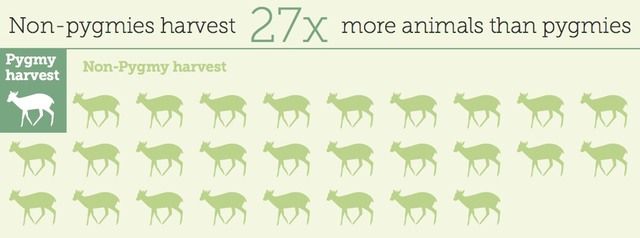
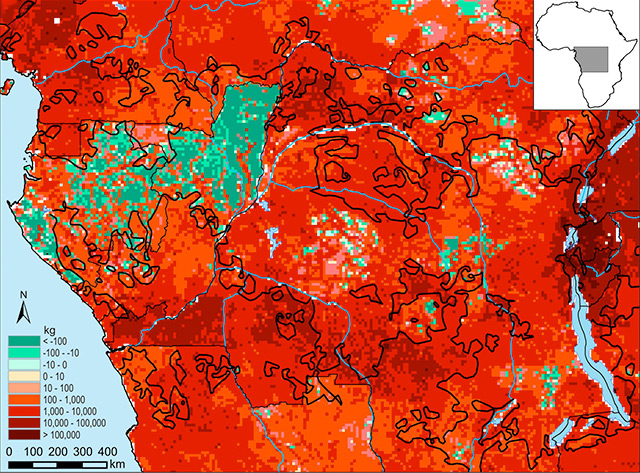
This is one of the few examples I know of that demonstrates clear conservation guidance while also accounting for the differences in local populations’ impact on wildlife, and [shows] why respecting the rights of indigenous peoples to hunt for subsistence is not anti-conservation.
Jerome Lewis, University College London anthropologist and study co-author
Read the research: Differences between Pygmy and Non-Pygmy hunting in Congo Basin forests
Blog: Understanding the ways we use wildlife
Next steps
CIFOR is distilling these results into policy recommendations on how to protect both indigenous groups and forest biodiversity.
Researchers are also reviewing the data to identify conflict hotspots where deforestation, professional poaching, mining, road networks, population pressure and climate change are threatening the future of Pygmy groups in Central Africa.
Photo by Susan Schulman.




